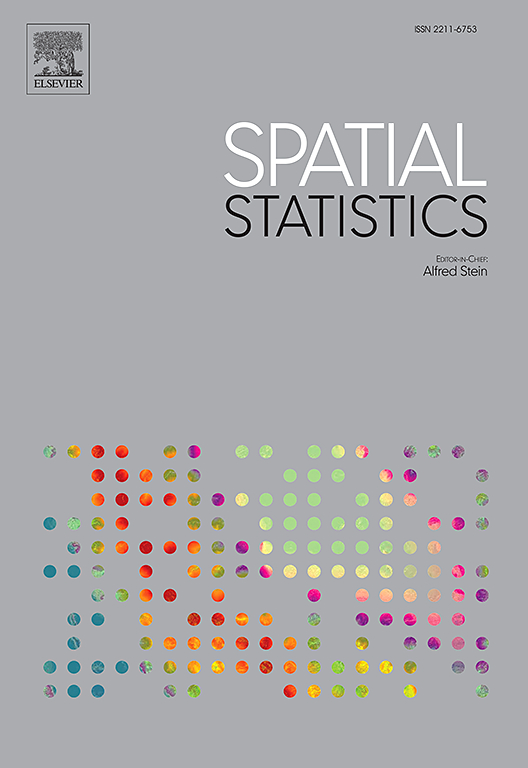空间计数数据的贝叶斯分析与变量选择——以里约热内卢枪支暴力为例
IF 2.5
2区 数学
Q3 GEOSCIENCES, MULTIDISCIPLINARY
引用次数: 0
摘要
统计分析已成功地应用于犯罪数据中,用于识别犯罪热点和预测未来犯罪。在本文中,我们的主要目标是确定巴西里约热内卢枪支暴力的关键因素,并研究这些关键因素与报告事件数量之间的关系。我们使用贝叶斯分层随机泊松回归模型进行空间计数,这使我们能够解决过度分散的计数数据并处理空间相关性。此外,我们还提出了一种基于回归系数的穗板先验分布的变量选择方法来识别关键因素。利用Pólya-Gamma辅助变量的增广,开发了一种新的Gibbs采样器,用于对后验分布进行采样。仿真研究证明了我们提出的方法的性能。我们对巴西里约热内卢枪支暴力数据的分析揭示了暴力事件与社会人口协变量之间的关系,以及一种可解释的空间随机效应,该效应解释了不可测量的协变量信息。本文章由计算机程序翻译,如有差异,请以英文原文为准。
Bayesian analysis and variable selection for spatial count data with an application to Rio de Janeiro gun violence
Statistical analysis has been successfully applied to crime data for identification of crime hot spots and prediction of future crimes. In this paper, our main objective is to identify key factors for gun violence in Rio de Janeiro and study the relationship between these key factors and the number of reported events. We use a Bayesian hierarchical stochastic Poisson regression model for spatial counts, which enables us to address the over-dispersed count data and to handle the spatial correlation. Moreover, we propose a variable selection method for key factor identification based on the spike-and-slab prior distribution for the regression coefficients. A new Gibbs sampler is developed for sampling from the posterior distributions with the help of augmentation of Pólya-Gamma auxiliary variables. Simulation studies are used to demonstrate the performance of our proposed approach. Our analysis of the gun violence data in Rio de Janeiro reveals the relationship between violence events and socio-demographic covariates as well as an interpretable spatial random effect that accounts for unmeasured covariate information.
求助全文
通过发布文献求助,成功后即可免费获取论文全文。
去求助
来源期刊

Spatial Statistics
GEOSCIENCES, MULTIDISCIPLINARY-MATHEMATICS, INTERDISCIPLINARY APPLICATIONS
CiteScore
4.00
自引率
21.70%
发文量
89
审稿时长
55 days
期刊介绍:
Spatial Statistics publishes articles on the theory and application of spatial and spatio-temporal statistics. It favours manuscripts that present theory generated by new applications, or in which new theory is applied to an important practical case. A purely theoretical study will only rarely be accepted. Pure case studies without methodological development are not acceptable for publication.
Spatial statistics concerns the quantitative analysis of spatial and spatio-temporal data, including their statistical dependencies, accuracy and uncertainties. Methodology for spatial statistics is typically found in probability theory, stochastic modelling and mathematical statistics as well as in information science. Spatial statistics is used in mapping, assessing spatial data quality, sampling design optimisation, modelling of dependence structures, and drawing of valid inference from a limited set of spatio-temporal data.
 求助内容:
求助内容: 应助结果提醒方式:
应助结果提醒方式:


